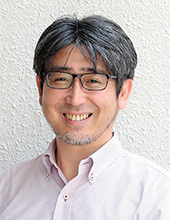
Oki NAKAMURA
Principal Investigator
The Organisation for the Promotion of Common Education, Ritsumeikan University, Professor
Estimating demographic trends that affect various aspects of society, such as the economy and culture, is a necessary study for understanding human history. This group will update the previous population estimates for the Jomon period calculated in the 1980s, as well as work on new population estimates for the Yayoi period and beyond. In the future, the group will connect these results with the results of historical demography since ancient times, aiming to update the demographic history of the Japanese archipelago, spanning approximately 10,000 years. The results of our very long-term demographic research will also help us to consider contemporary demographic issues in the current period of great population change that began in the late 1800s.
Team Members and Research Themes
- Yosuke Kawai (Deputy Project Manager, Genome Medical Science Project, Naional Institute of Global Health and Medicine, Japan Institute for Health Security):computer analysis of population dynamics through genome analysis
- Noxon Corey Tyler (Ritsumeikan Universiy, Ritsumeikan-Global Innovation Research Organization, Assistant Professor):population estimation and mobility assessment
- Yuji Yamaguchi (Tokushima University, Graduate School of Technology, Industrial and Sciences, Associate Professor):demographic analysis and bias assessment in western Japan
- Katsunori Takase (Hokkaido University Graduate School of Humanities and Human Sciences, Professor):Analysis of Population Change and Resource Use in Eastern Japan
Outline of Research
This research group aims to empirically elucidate the temporal and spatial dynamics of population levels in prehistory, particularly during the Jomon period. The research will deal with archaeological data (archaeological sites, remains, and artifacts), human skeletal data (traits and genomes), and environmental data (terrestrial and aquatic areas). By integrating archaeological and natural science methods, we will develop quantitative analysis methods that utilize diverse data. We will then develop comprehensive and reliable prehistoric demographic reconstructions based on the comparisons of multiple estimates. We also plan to develop a systematic methodology for population estimation using indirect data by proposing methods to reduce various biases that affect population estimation. This research group will promote the elucidation of prehistoric population dynamics in the Japanese archipelago and play a part in Group B's research theme, "Elucidation of Prehistoric Human Diffusion and Regional Characteristics in the Japanese Archipelago. In addition, we hope to contribute to the development of a new academic field, integrative bioarchaeology, through an integrated study of the interactions between population, sociocultural, and environmental adaptation.

